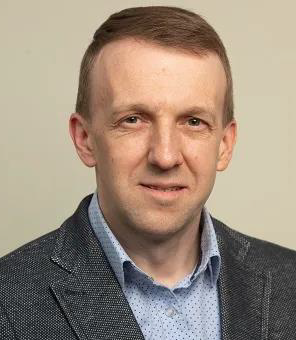报告题目:Nanophotonics for control of spins in magnetic materials
报告时间:2024年10月22日(周二),下午3:00~4:00
报告地点:光电大楼301室
报告人:Vladimir Belotelov 教授 Professor of Russian Academy of Sciences;Principal investigator of Russian Quantum Center;Professor of M.V. Lomonosov Moscow State University.
邀请人:金钻明
报告简介:
All-dielectric nanostructures are very promising for effective spin control in magnetic materials using femtosecond laser pulses. Such structures with specially adjusted parameters make it possible to obtain various optical resonances in a magnet (optical waveguide modes, Mie modes, Fabry-Perot resonance) and, thereby, distribute the optical spin angular momentum (the effective magnetic field of the inverse magneto-optical Faraday and Cotton-Mouton effects) in a magnetic material in the right way, which eventually leads to excitation of various spin modes with high amplitude [1-4].
In particular, in magnetophotonic crystals and nanostructured magnetic films, it is possible to excite standing spin waves limited in one or all three dimensions. When optical resonances are excited in magnetic nanospheres or nanocylinders, it becomes possible to reconstruct the local and inhomogeneous effective field of the reverse Faraday effect within a wide range to excite high-order standing modes.
On the other hand, due to the deposition of a non-magnetic nanolattice to a magnetic film, laser pulses excite ultrashort traveling spin waves with a length of about 100-300 nm, which is significantly less than the wavelength of light in a magnet. In this case, nanolattices play a dual role – they allow not only to excite short spin waves, but also to observe them, which is impossible for homogeneous magnetic films. Along with this, the use of nanolattices gives birth to a novel optomagnetic effects, for example, the inverse transverse Kerr effect, which significantly expands the range of functionality for controlling spins by light.
References
1. Krichevsky D.M., Bel’kova A.V., Ozerov V.A., Sylgacheva D.A., Kalish A.N., Evstigneeva S.A., Pakhomov A.S., Mikhailova T.V., Lyashko S.D., Kudryashov A.L., Semuk E.Yu., Chernov A.I., Berzhansky, V.N., Belotelov V.I. Nanophotonics vol. 13, no. 3, 2024, pp. 299-306. (2024)
2. D. Ignatyeva, D. Krichevsky, D. Karki , A. Kolosvetov , P. Zimnyakova , A. Shaposhnikov , V. Berzhansky , M. Levy , A. Chernov , V. Belotelov, Physical Review Applied, 21, 034017 (2024).
3. D.O. Ignatyeva, C.S. Davies, D.A. Sylgacheva, A. Tsukamoto, H. Yoshikawa, P.O. Kapralov, A. Kirilyuk, V.I. Belotelov, and A.V. Kimel, Nature Сommunications 10(1), 4786 (2019).
4. A.I. Chernov, M.A. Kozhaev, D.O. Ignatyeva, E.N. Beginin, A.V. Sadovnikov, A.A. Voronov, D. Karki, M. Levy, V.I. Belotelov, Nano Letters 20(7), 5259-5266 (2020).
报告人简介
 Vladimir Belotelov is a professor at Moscow University and the deputy director and chief scientist of the Russian Quantum Center. His research primarily focuses on novel magnetic plasmonic materials, including magnetic nanostructured multilayers; the manipulation of surface plasmon polaritons in multiferroic materials using spin-polarized currents and laser pulses, the inverse transverse magneto-optical Kerr effect, and the inverse spin Hall effect in topological insulators.
Vladimir Belotelov is a professor at Moscow University and the deputy director and chief scientist of the Russian Quantum Center. His research primarily focuses on novel magnetic plasmonic materials, including magnetic nanostructured multilayers; the manipulation of surface plasmon polaritons in multiferroic materials using spin-polarized currents and laser pulses, the inverse transverse magneto-optical Kerr effect, and the inverse spin Hall effect in topological insulators.

